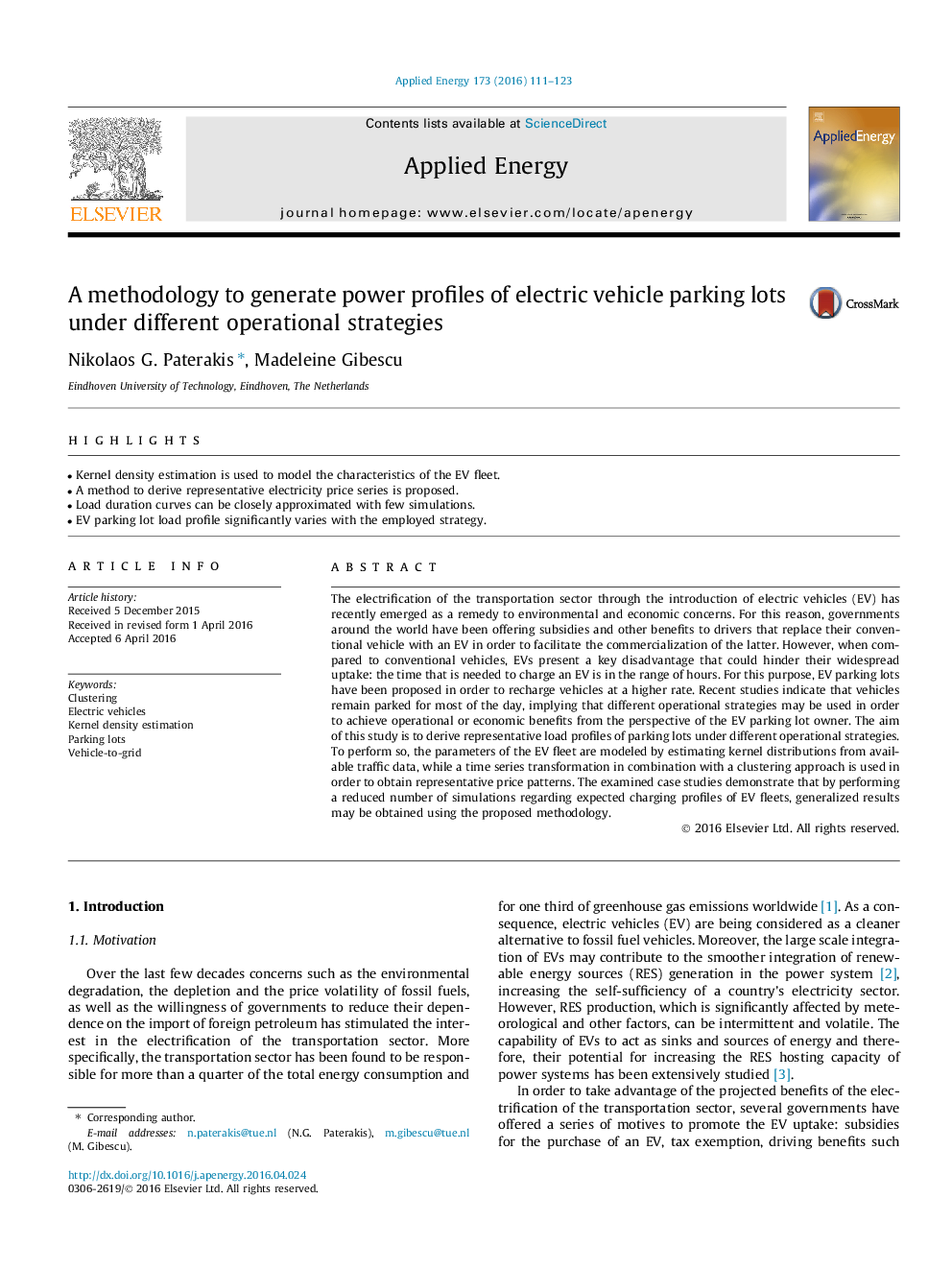| Article ID | Journal | Published Year | Pages | File Type |
|---|---|---|---|---|
| 6683093 | Applied Energy | 2016 | 13 Pages |
Abstract
The electrification of the transportation sector through the introduction of electric vehicles (EV) has recently emerged as a remedy to environmental and economic concerns. For this reason, governments around the world have been offering subsidies and other benefits to drivers that replace their conventional vehicle with an EV in order to facilitate the commercialization of the latter. However, when compared to conventional vehicles, EVs present a key disadvantage that could hinder their widespread uptake: the time that is needed to charge an EV is in the range of hours. For this purpose, EV parking lots have been proposed in order to recharge vehicles at a higher rate. Recent studies indicate that vehicles remain parked for most of the day, implying that different operational strategies may be used in order to achieve operational or economic benefits from the perspective of the EV parking lot owner. The aim of this study is to derive representative load profiles of parking lots under different operational strategies. To perform so, the parameters of the EV fleet are modeled by estimating kernel distributions from available traffic data, while a time series transformation in combination with a clustering approach is used in order to obtain representative price patterns. The examined case studies demonstrate that by performing a reduced number of simulations regarding expected charging profiles of EV fleets, generalized results may be obtained using the proposed methodology.
Related Topics
Physical Sciences and Engineering
Energy
Energy Engineering and Power Technology
Authors
Nikolaos G. Paterakis, Madeleine Gibescu,
